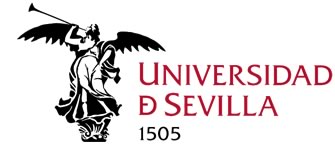Proyecto I+D+i
Detection of smoke by eyesafe lidar
Responsable: Antonio Córdoba Zurita
Tipo de Proyecto/Ayuda: Proyecto Internacional (EU)
Referencia: INTAS99-1634
Web: http://cordis.europa.eu/projects/rcn/66049_en.html
Fecha de Inicio: 01-05-2000
Fecha de Finalización: 30-04-2002
Empresa/Organismo financiador/es:
- INTAS (International Association for the promotion of co-operation with scientists)
Socios:
- Instituto Superior Tecnico (Rui Vilar)
- Institute of Analytical Instrumentation (Valerii Akulinichev)
- Russian Scientific Center "Applied Chemistry" (Alexander Lavrov)
Resumen del proyecto:
The goals of the project are the following: to create mathematical model of eye safe lidar at 1.54mm with solid-state laser for detection of smoke; on the basis of this model to make extensive studies of lidar (to determine the necessary laser energy for various ranges, weather conditions (various visibility), receiver optics diameters, receiver field of view, signal-to-noise ratio, pulse duration, types of smoke, fuel mass burned in the unit of time, wind velocity); to plan, design and put into operation lidar at 1.54mm; to perform experiments of smoke detection by lidar near St.-Petersburg and near Lisbon for various ranges, types of smoke, weather conditions, fuel mass burned in the unit of time. On the basis of experimental results and numerical calculation recommendations about the characteristics of eye safe lidar at 1.54mm produced on a mass scale will be generated. Investigation of the smokes by lidar was one of the first areas of using lidar in civilian practice. As a rule, lidars with ruby or neodimium laser (at l=0.69mm and l=1.06mm) were used in these experiments. Also theoretical estimation of necessary laser parameters for smoke detection on the basis of lidar with wavelength 0.265-1.06 mm was made. But the modern tendency is to use in lidar only lasers with eye safe wavelength. Among other things lidar with Er-glass laser at 1.54mm is one of the best representatives of eyesafe lidars: This lidar will be compact, power consumption will be low and using of avalanche photodiode will be favourable to improvement of lidar parameters.
Creation of this lidar has been possible by use of modern 1.54mm solid-state lasers. Taking into account, that in future, as a rule, lidar for smoke detection will be used in automatic regime and with autonomous power supply, it is desirable to have design of device as simple as possible. That is why it is supposed to design lidar with direct detection on the basis of Mie backscattering by the particles of smoke. The investigations of present project will be innovative and will fill the gap in the theory and practice of lidars. The results of the project will have a big practical sense since recommendations about the characteristics of eye safe lidar for smoke detection at 1.54mm produced on a mass scale will be generated. In Task 1 on the basis of bibliographical search, collection of data on the average composition and size distribution of the particles of various smokes from fires will be gathered. Mathematical model of lidar will be developed and calculations of the parameters and optimisation will be made. Computations will be made for variation of signal-to-noise ratios, f distance, receiver diameter, laser power, weather conditions, and fuel mass burned in the unit of time. In Task 2 preparation of specifications and planning of lidar will be made. Creation of a prototype lidar on the basis of solid-state laser at l=1.54mm will be made in Task 3. Experimental determination of the curves of variation of signal-to-noise ratios as a function of distance, weather conditions, type of smoke, fuel mass burned in the unit of time and validation of the mathematical model will be made in Task 4.
Additional planning, design and modification of a lidar based on experience of Task 4 will be realised in Task 5. Modification of mathematical model on the basis of experimental result received in Task 4 will be made in Task 6. Experiments with improved lidar will be realised in Task 7. Measurements will be performed for various smokes and distances. Comparison of experiments with the modified calculated values will be made. Demonstration of work of lidar in Russia for INTAS partners will be realised in Task 8. Final demonstration of lidar in the field in Lisbon with various types of smokes and distance will be made in Task 9. Creation of final report on the basis of results of experiments and computations from previous Tasks will be realised in Task 10. As a result of the project eyesafe lidar with solid-state laser at 1.54mm for smoke detection and proper mathematical model will be developed. Lidar and computer program will be transferred to INTAS partners. The experiments will be performed and recommendations about the characteristics of lidar produced on a mass scale will be generated.

